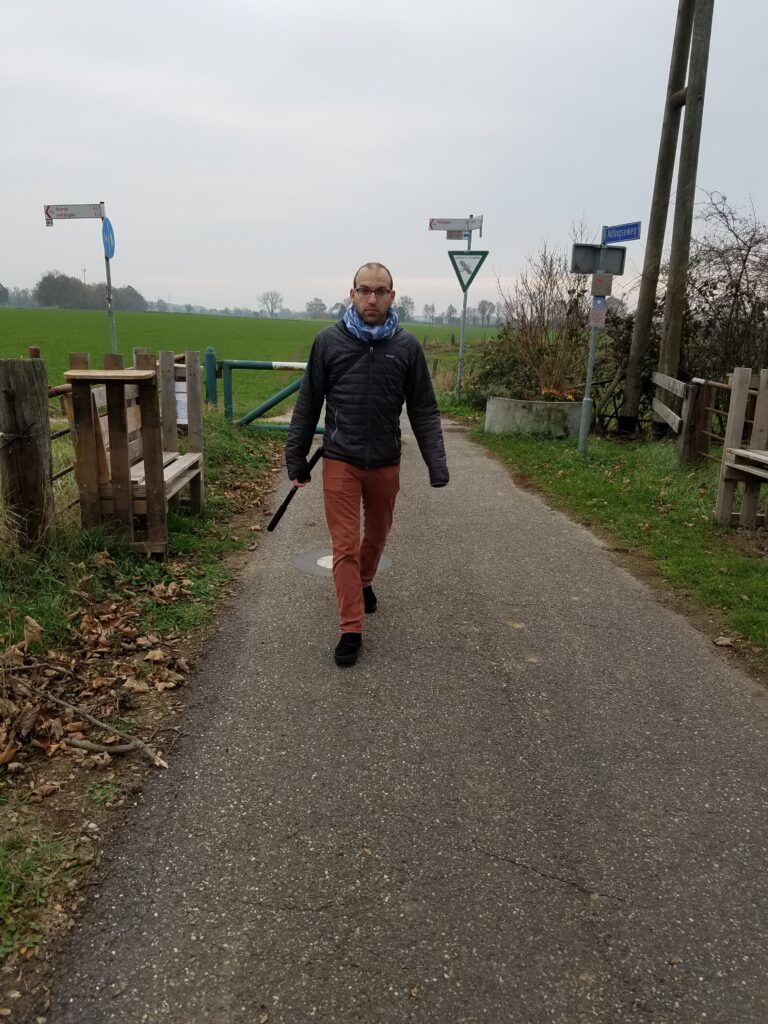Can a place be a character?
Please allow me first to offer an excerpt from my book as my family of 1938 prepares to cross the border from Germany to Holland:
Moritz explains the next phase, as he outlines the shape of a nearby ditch in pantomime. “Go, down in that ditch there. Stay low.”
The family members squat in the dry ditch and catch their breath as they await the next instruction. Moritz knew there was a German gendarme, border guard, nearby. After a few minutes, the border guard bicycles home for lunch. In fifteen minutes, his replacement will arrive.
Moritz marvels, momentarily, at how his bicycle trips to customers across the border have enabled him to become familiar with this gendarme’s schedule.
Once the gendarme is out of sight, Moritz scrambles out of the ditch, and everyone follows behind him. Selma has some difficulty, but still she manages, thanks to the heavy dose of adrenaline coursing through her body.
“Run to that farm.” Moritz again points out the next location. “It is owned by a customer of our store.” …
From the farm that straddles the Dutch border with Germany, Walter and his family run up the street toward the Megchelen village center.
—Shattered Stars, Healing Hearts: Unraveling My Father’s Holocaust Survival Story, Chapter 18: Limousines and Lunches, page 107 and Chapter 19: One Letter, 118.
After he read the story of my family crossing the border, Jacques Ploeger*, one of my connections from Holland who lives in this border area, wrote me: “This route is the same as the butter and coffee smugglers took in the thirties.” He added: “In the town of Rees (close to Bocholt and Vehlingen) there was a forced labor camp where a huge number of Dutch forced laborers had to work for the organization Toth, named after the commander-in-chief that took care of building anti-tank ditches and bunkers. My mother-in-law went here several times in secret to deliver rye bread. Lots of people died due to harsh circumstances. Locals helped them escape through the same route your family took earlier.”
I feel as though the border crossing itself has become a character. It wasn’t in service just that one time for my father and his family. It has its own full life, seeing smugglers, resistance, and labor camp escapees during the War. Even now, that small crossing is used by German ambulances to help Megchelen residents in need of the most expedient transport to a hospital, according to Mr. Ploeger. And, this lovely, sweet, benevolent crossing receives visitors wishing to understand its history, visitors who give thanks to this place for providing safe passage.
Focus on the area around the green gate behind Josh in the photo as he crosses the border from Germany to Holland in November 2018. Let your eyes rest there for a few moments.
What do you think? Would you consider this border crossing a character?
*I met Jacques Ploeger via email while he was working on a project to compile the 450-page Dutch-language book, Opdat Wij Niet Vergeten, Lest We Forget. Mr. Ploeger sent me the book a couple of years ago because I wrote the final chapter (which was translated into Dutch for the book) about my family’s experience in Megchelen.
Though I’ve leafed through the book, my Dutch language skills are inadequate to understand much. And so, it sits on my piano in full view, awaiting the day I dare to try reading it.
Mr. Ploeger shared a bonus with me after reading my chapter about my family’s arrest. He pointed me to page 53 in the Dutch book, to the photo of the local policeman, Wiendels.
This is one of the photos I didn’t have for my presentations—for the slide where I show the eighteen individuals who helped save my family. Now I can add it so when I say his name out loud, my audience can also see what Wiendels looked like.
Having the photo to go with the name when my father and I tell the story means so much to me!



